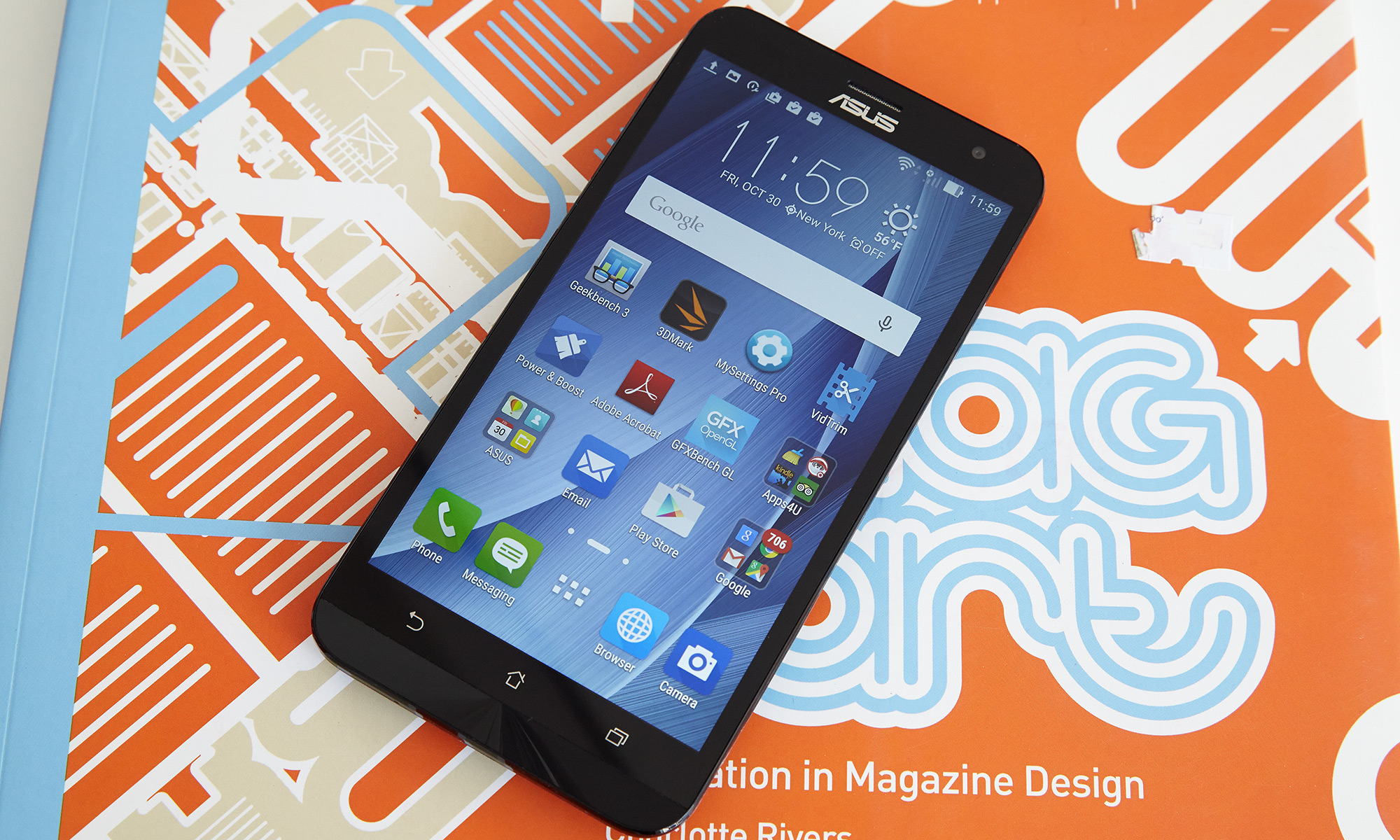Tom's Guide Verdict
The $249 Asus ZenFone 2 Laser packs a decent camera and good performance for the price, but could last longer on a charge.
Pros
- +
Affordable
- +
Good camera
- +
Removable battery
- +
Nifty software
- +
Dual SIM card slots
Cons
- -
A little heavy
- -
Below-average battery life
Why you can trust Tom's Guide
Asus wowed the industry with the very affordable ZenFone 2 earlier this year and now looks to relaunch it for the not-so-power user. Starting at $199 ($50 less than the earlier model), the new ZenFone 2 Laser uses a Qualcomm processor instead of an Intel one, and has less RAM. As its name suggests, the handset's camera comes with laser-assisted autofocus for sharper shots. You also get two SIM card slots, which is especially helpful when you want to avoid racking up roaming fees abroad. However, its battery doesn't last long enough to make the ZenFone 2 Laser stand out among the sea of affordable Android phones.
Editors' note: The Asus ZenFone 2 Laser is a variant of the ZenFone 2, and has only a few differences from the original. In this review, we mainly cover the features that are new or different, such as performance and the camera. To see a more detailed analysis of the rest of the phone — including its display, audio and software — check out the full review of the ZenFone 2.
Design
Just like the original, the ZenFone 2 Laser has a plastic, slightly curved frame that's easy to grip.
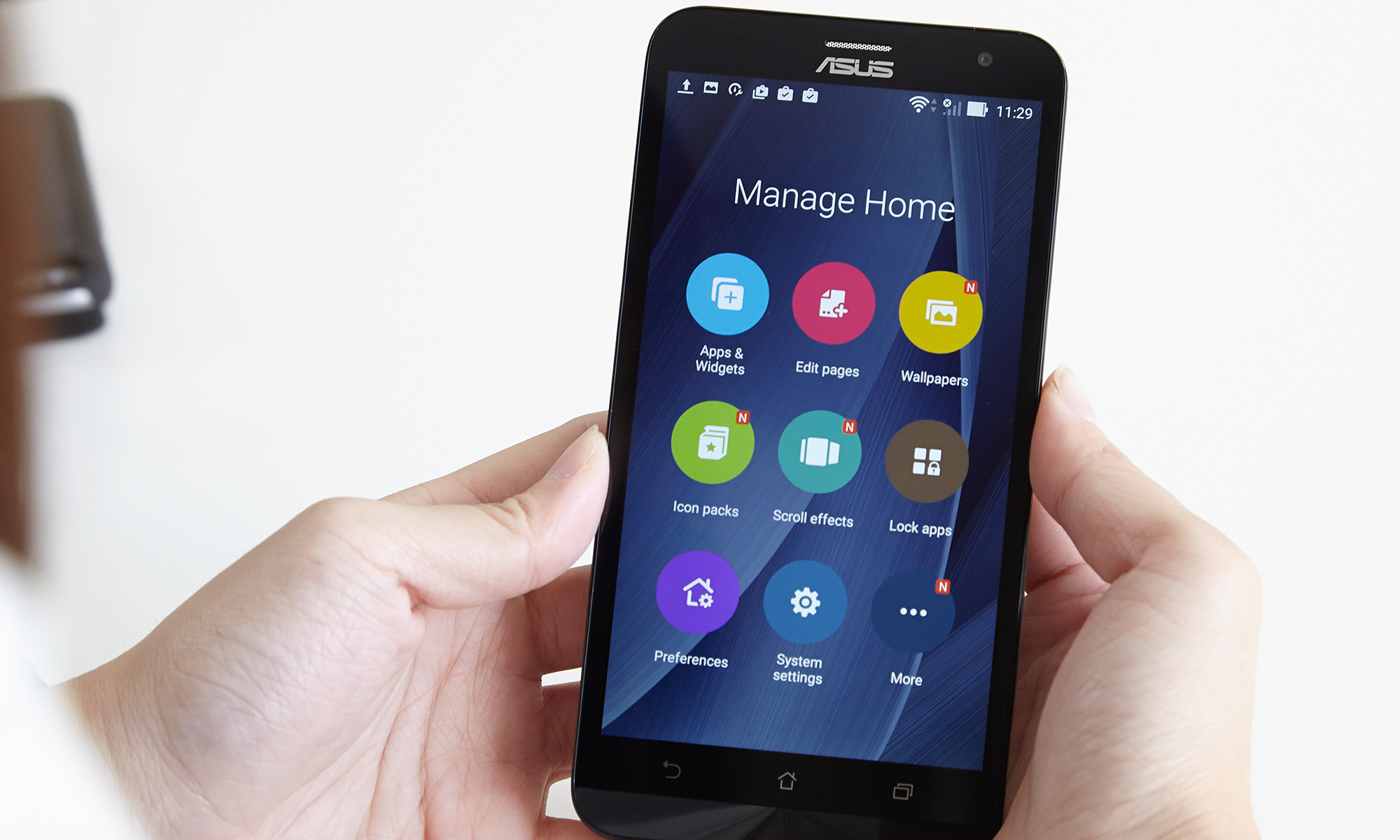
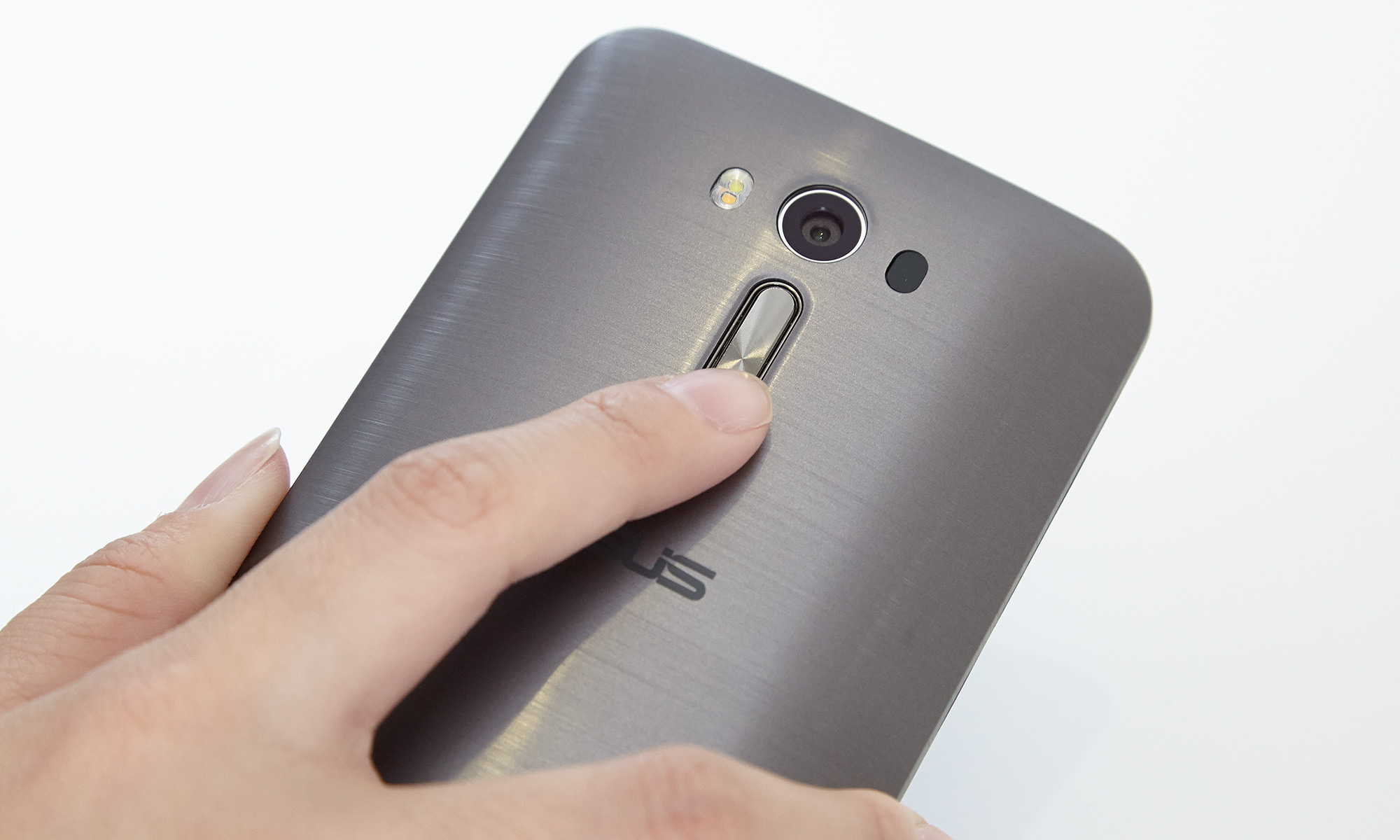

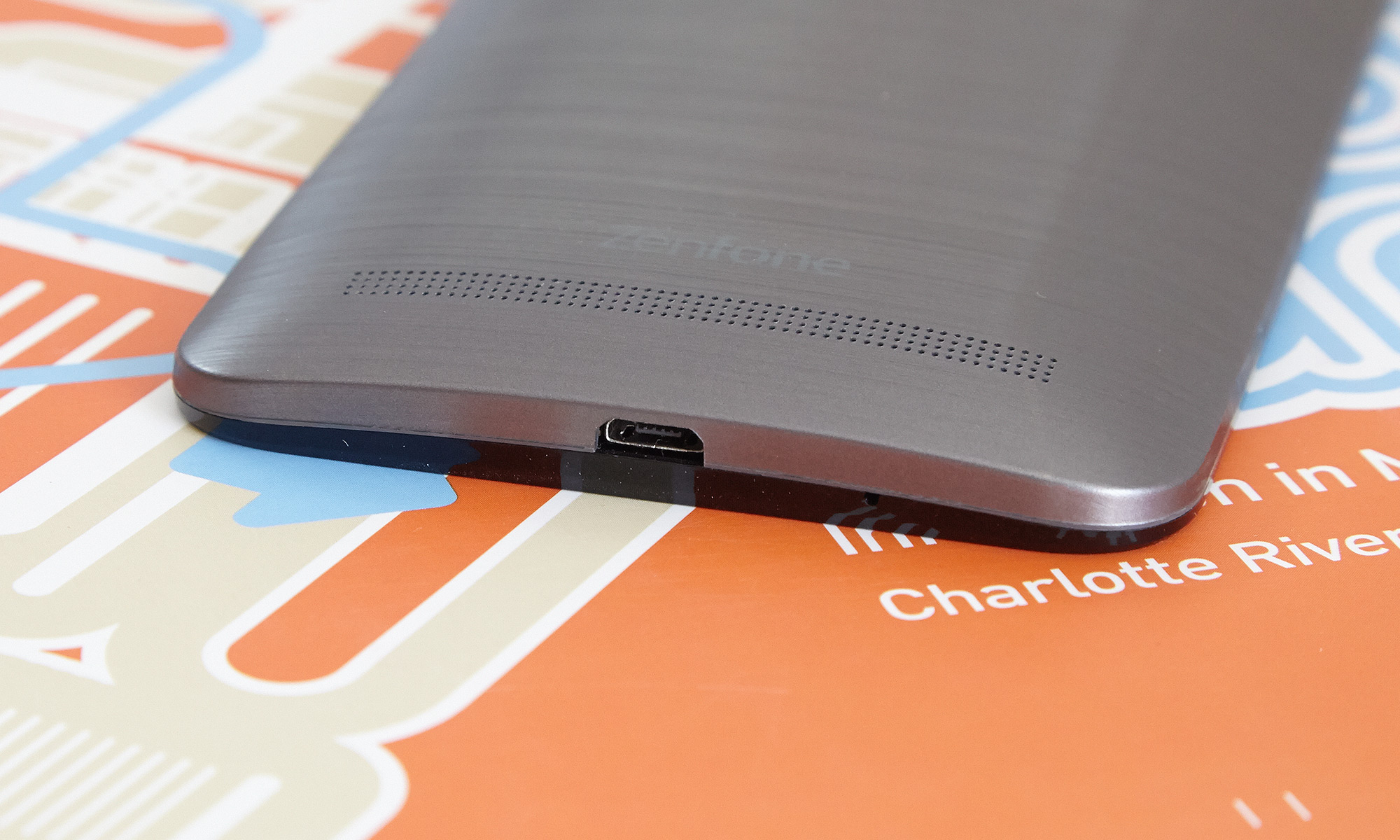
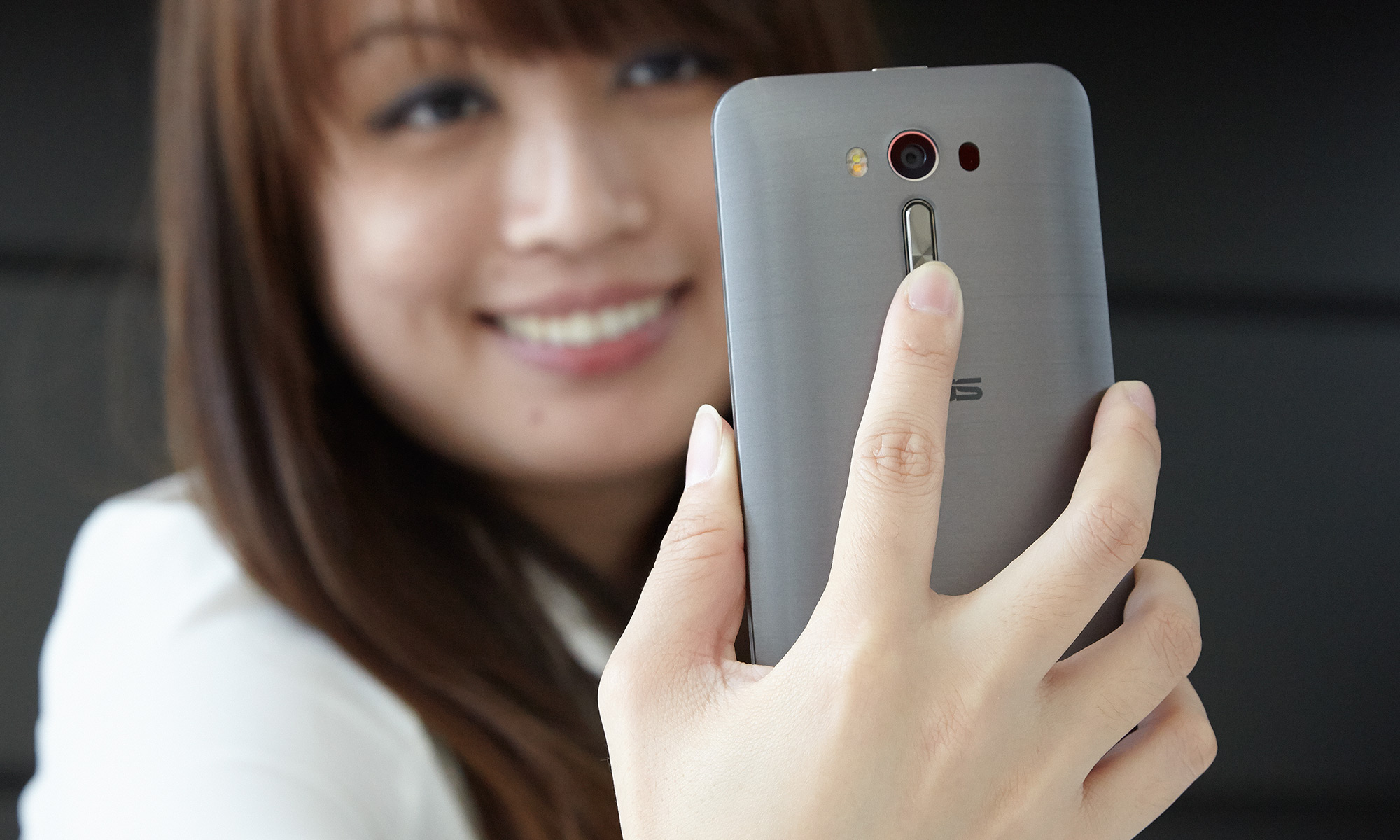

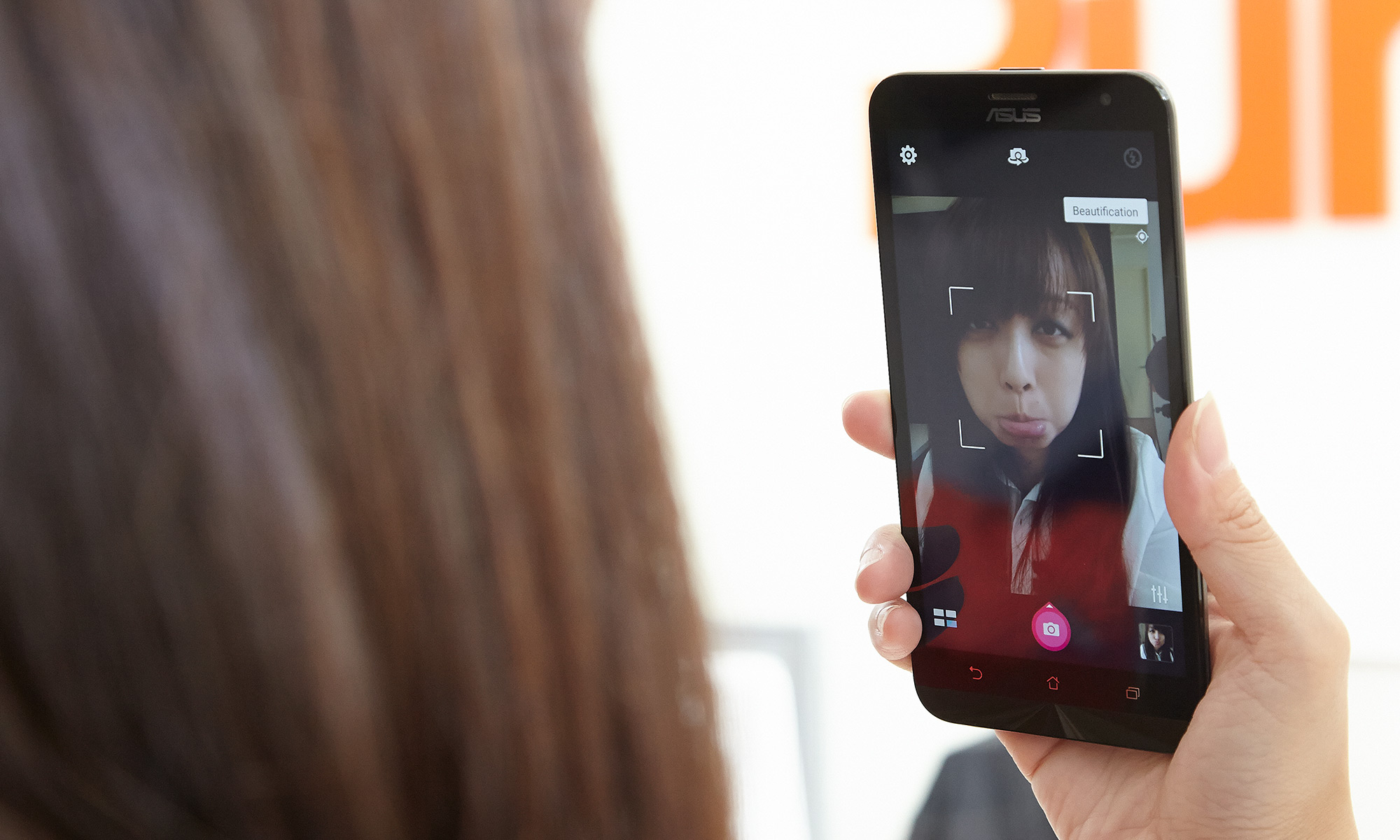
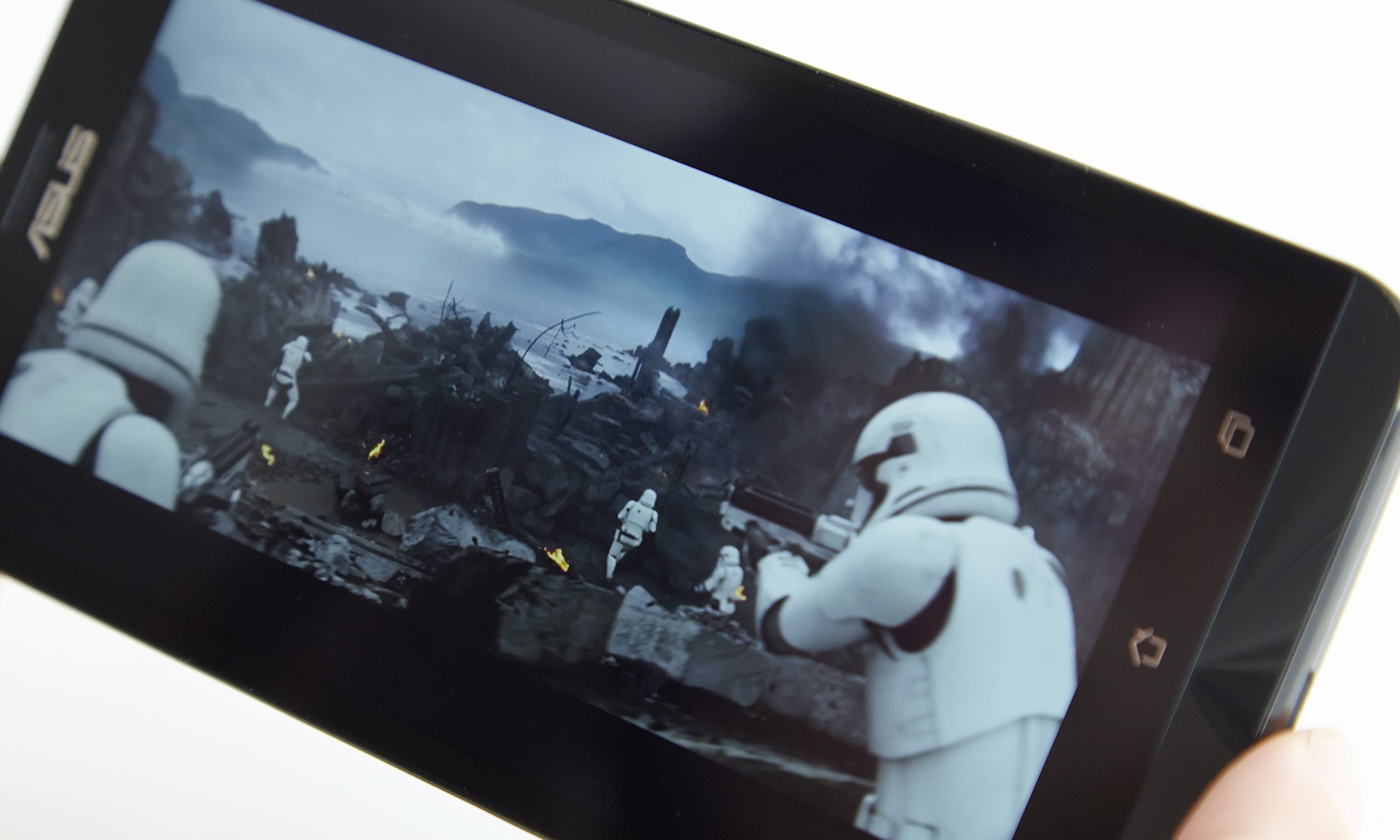
Its top-facing power button took me a while to find and is hard to reach, while its volume rocker is on the back, under the camera. Whereas the ZenFone 2 only had a removable back that didn't officially let you swap out the battery (unless you're good with screwdrivers), the Laser's battery is fully replaceable.
Weighing 6 ounces, the ZenFone 2 Laser is heavier than the 4.85-ounce Alcatel Onetouch Idol 3 but lighter than the 6.3-ounce Moto X Pure. The iPhone 6s Plus weighs the same (6 ounces).
Display
The ZenFone 2 Laser retains the original's 5.5-inch 1080p display that was colorful, but dim and inaccurate, in our testing.
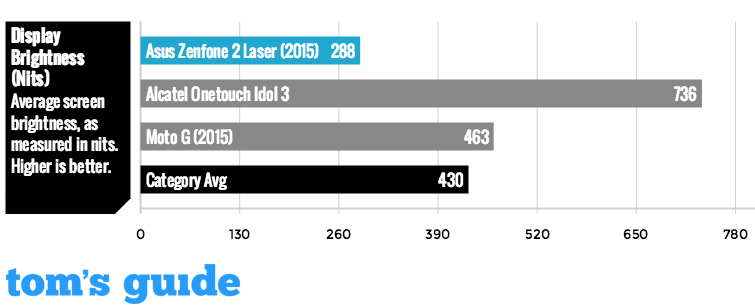
It registered just 288 nits on our light meter, which is dimmer than the average smartphone (405.9 nits), the ZenFone 2 (325 nits) and the Idol 3 (736 nits).
Get instant access to breaking news, the hottest reviews, great deals and helpful tips.
Reproducing just 87.2 percent of the sRGB gamut, the Laser is less colorful than the ZenFone 2 (96 percent), the average smartphone (117 percent) and the Idol 3 (94 percent). With a Delta-E error rating of 3.14, the Laser's display is more accurate than the ZenFone 2 (8.5) and the average smartphone (3.31), but less accurate than the Idol 3 (2.6). Numbers closer to 0 are better.
MORE: Best Smartphones on the Market Now
The Laser also comes with the same Asus Splendid app that lets you pick a color profile for your display, such as Standard, Reading, Vivid or Auto. Glove mode lets you use the touch screen while keeping your fingers gloved and toasty in the cold.
Software
Laid on top of Android 5 Lollipop, Asus' ZenUI skin gives you a ton of gestures and lets you customize numerous options, such as the font, the way folders look and screen transitions.

ZenUI also adds lock-screen gestures, so you can draw a "C" to launch the camera, an "E" to open the Email app and a "W" to start the browser. You can determine what these gestures do in the Settings menu.
Performance
Instead of the 2.3-GHz quad-core 64-bit Intel Atom Z3580 CPU and 4GB that the original ZenFone 2 had, the Laser rocks a 1.7/1.0-GHz octa-core 64-bit Snapdragon 615 chip with 3GB of RAM. That's plenty of power to smoothly upload pictures to Drive or Facebook, look up the weather, and download apps. However, more taxing activity strained the ZenFone 2 Laser.
MORE: A Guide to No Contract and Prepaid Phone Plans
I played a few rounds of Cooking Dash while apps such as Settings, Camera, YouTube, Browser and Drive were open, and the Laser stuttered whenever I tried to make my character Flo do more than serve just one dish at a time.
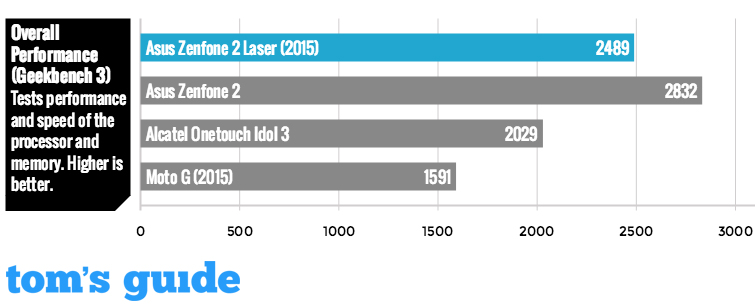
On general performance benchmark Geekbench 3, the ZenFone 2 Laser's score of 2,489 is lower than the Intel ZenFone 2 (2,832) and the average smartphone (2,564), but higher than the Alcatel Onetouch Idol 3 (2,029) and the 2015 Moto G (1,591). The Alcatel packs an octa-core Snapdragon 615 CPU, while the Moto G uses a quad-core Snapdragon 410 chip.
The ZenFone 2 Laser converted a 204MB 1080p movie to 480p in 9 minutes and 17 seconds. That's slower than the average smartphone (6:37) and the original ZenFone 2 (3:40), the Idol 3 (8:22) and the Moto G (8:24).
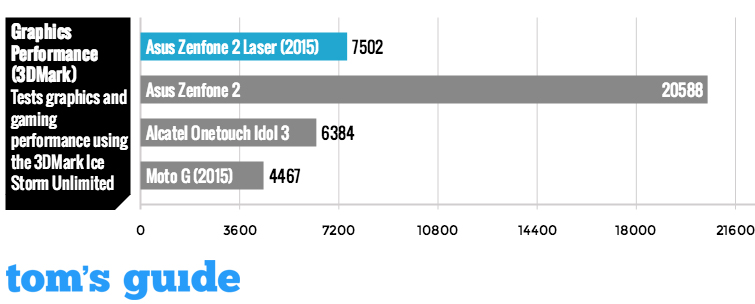
Although I found the graphics performance on Cooking Dash adequate, the ZenFone 2 Laser delivered a middle-of-the-road score on the 3DMark Ice Storm Unlimited benchmark. Its result of 7,502 is poorer than that of the average smartphone (14,896) and the Intel-powered ZenFone 2 (20,588), but better than the Idol 3 (6,384) and the Moto G (4,467).
Camera
Asus improved upon the ZenFone 2's 13-megapixel camera by adding a laser autofocus that it says will focus in 0.2 seconds for blur-free images. However, this feature didn't work too well in my testing, as the Laser was often slower to focus than my iPhone 6s when capturing the same scenes.

I was impressed by the level of detail the ZenFone 2 Laser captured in my pictures of Manhattan buildings, in which I could clearly see intricate patterns on the edges of walls. Red walls and green window frames were vivid, despite the overcast sky.

A shot of my fearsome masked-fox plush toy showed off the fiery colors of his orange-and-yellow tail, and individual sequins on his purple mask were tack sharp.

The ZenFone 2 Laser left a lot to be desired in low light. Although my shots of the Manhattan skyline at night looked bright and colorful, they were also muddy and noisy (speckled).
MORE: Best Smartphone Camera
The 1080p video I shot with the Laser of Manhattan street traffic was smooth, bright and clear.
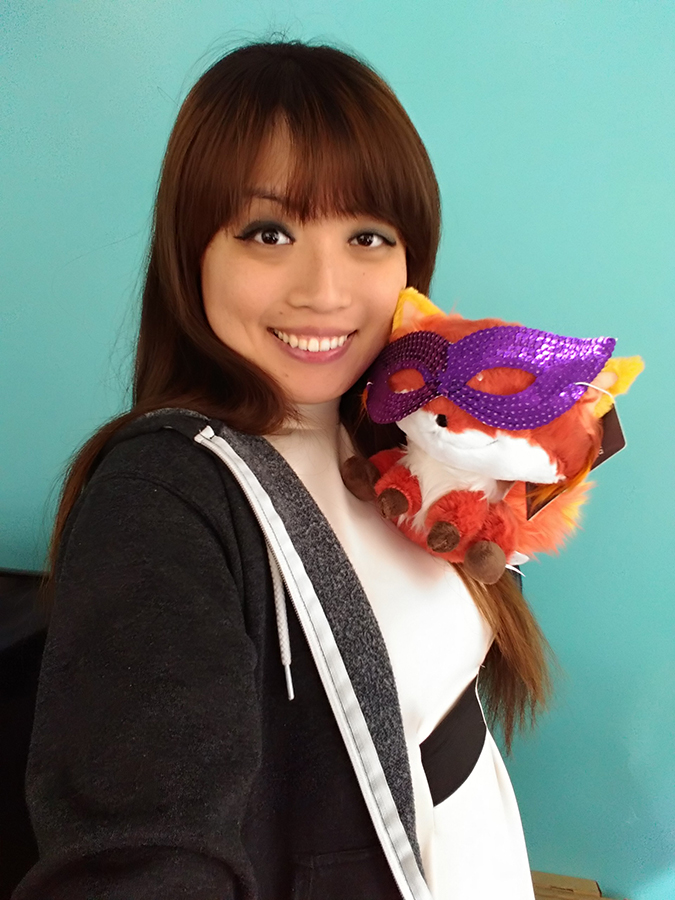
In general, the Laser's 5-MP selfie cam took bright, vivid pictures, although images were slightly green. A pic of me posing with the masked mascot plushie in front of a blue wall had the background looking more green than blue, and my skin looked more sallow than it is.
Asus' front shooter had trouble adjusting for different skin tones, casting a sickly green hue over a portrait of me and a co-worker. This cast was not as apparent when I took a solo selfie in the same spot.

This will leave you green — both literally and with envy — for your friends' superior selfies.
Like the ZenFone 2, the Laser offers a Manual mode for advanced shooting, giving you control over settings such as ISO light sensitivity, light balance, exposure compensation and shutter speed.
Asus also offers a Super Resolution mode for extra sharp pictures, Depth of Field for pleasing blurred background effects, as well as such fun features as GIF Animation, Time Rewind, Smart Remove (for getting rid of unwanted background objects), Time Lapse and Slow Motion.
The front camera uses the Beautification tool by default, which lets you adjust your skin's smoothness and tone, as well as perform more drastic changes, such as slimming your face or enlarging your eyes.
Battery
Lasting 7 hours and 55 minutes on our battery test, which involves Web surfing over T-Mobile's 4G LTE network at 150 nits of brightness, the ZenFone 2 Laser will barely last you a full work day on a charge.
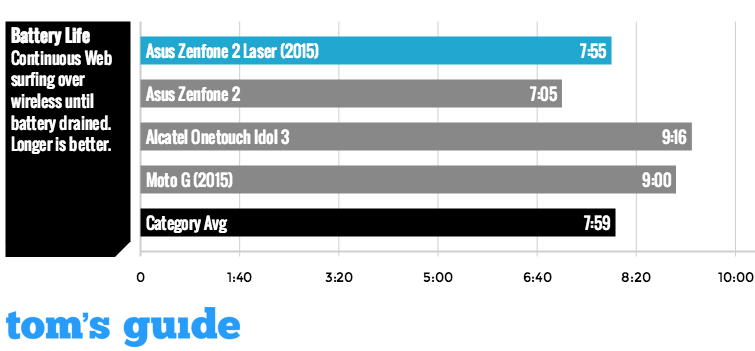
MORE: Smartphones with the Longest Battery Life
That's longer than the original ZenFone 2 (7:05), but shorter than the average smartphone (8:11), the Moto G (9:00) and the Idol 3 (9:16).
Asus ZenFone 2 vs. ZenFone 2 Laser
Whereas the ZenFone 2 supports NFC, the ZenFone 2 Laser does not, which means you can’t use this phone to make mobile payments using services like Android Pay. The Laser's Snapdragon processor and 3GB of RAM also makes for a slower, clunkier experience compared to what you get with the ZenFone 2's Intel chip.
However, the Laser has some benefits in addition to the laser autofocus. For one, its removable battery means you can carry spare power packs around for long road trips.
MORE: The Best Cellphone Plans for Families and Individuals
Both ZenFones start at $199 for 16GB of internal storage, but the Laser has 3GB of RAM as opposed to the regular ZenFone 2's 2GB at that price. At $299, the ZenFone 2 has a faster 2.3-GHz Intel Atom processor, 4GB of RAM and 64GB of storage. The $249 Laser comes with 32GB of storage, and keeps the same processor and 3GB of RAM as the lower-cost version.
Bottom Line
Buying a smartphone for less than $250 can feel like shopping the clearance section. Most of the items available are hideous or hideously outdated, but once in a while, you come across a gem. The Asus ZenFone 2 series, starting at $199, is a great bargain, packing a good display in a sturdy frame. Camera lovers will appreciate the ZenFone 2 Laser's sharp, colorful image quality and fun customization features, and the microSD card slot will come in handy for storing all those pictures and videos.
However, the Laser's slow performance could turn off those who need speed and excellent multitasking. Its lack of NFC support also prevents Android Pay payments. Its below-average battery life, while better than the original ZenFone 2, could mean you'll have to spend time recharging the phone more often than you'd like.
Those who want faster performance should consider the $299 ZenFone 2 with Intel inside. Otherwise, shoppers on a budget that want sharp pictures will find the ZenFone 2 Laser a reliable companion.
Cherlynn is Deputy Editor, Reviews at Engadget and also leads the site's Google reporting. She graduated with a Master’s in Journalism from Columbia University before joining Tom's Guide and its sister site LaptopMag as a staff writer, where she covered wearables, cameras, laptops, computers and smartphones, among many other subjects.
